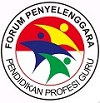Penggunaan Strategi Story Impressions untuk Mengembangkan Kemampuan Analisis Teks Cerita Fantasi Pada Siswa SMP
DOI:
https://doi.org/10.22460/jpp.v2i1.18319Keywords:
story impression, kemampuan analisis, teks cerita fantasiAbstract
This study aims to understand the use of Story Impression strategies in an effort to develop the ability to analyze fantasy story texts in students of SMP Negeri 1 Tebo Regency. In this study, Pre-experiment design with one group pretest-postest design was used. The participants in this study were 5 students from class VII at SMP Negeri 1 Tebo. The measurement was conducted by utilizing a written description test developed together with several Indonesian language teachers who also served at SMP Negeri 1 Tebo. From the results of data processing that has been done, it is known that there is a change in the average score of the pretest which previously had a value of 62.4 then increased to 93.2 in the posttest. The change value is then described through N-Gain of 0.81. The N-Gain value is classified as a high change value. Based on this, it can be understood that the use of the Story Impression strategy is known to have benefits for developing the ability to analyze fantasy story text in groups.
References
Ajideh, P. (2003). Schema Theory-Based Pre-reading Tasks: A Neglected Essential in the ESL Reading Class. The Reading Matrix, 3(1), 1–14.
Anggini, A. D. (2022). Analisis Media Pembelajaran Youtube Channel Riri Cerita Anak Interaktif untuk Pembelajaran Cerita Fantasi di Kelas VII SMP. Jurnal Ilmiah Pendidikan Profesi Guru, 5, 479–492.
Ariawan, V. A. N., Utami, N. T., & Rahman, R. (2018). Peningkatan Keterampilan Membaca Pemahaman Siswa Sekolah Dasar Melalui Implementasi Model CIRC Berbantuan Media Cetak. Al-Aulad: Journal of Islamic Primary Education, 1(2), 95–104. https://doi.org/10.15575/al-aulad.v1i2.3529
Bramastiwi, U., & Hermayawati, H. (2020). Perancangan lembar kerja siswa bahasa inggris untuk siswa madrasah dengan keterampilan mendengarkan berbicara membaca menulis kelas viii. KoPen: Konferensi Pendidikan Nasional, 2(1), 289–294.
Brevik, L. M. (2019). Explicit reading strategy instruction or daily use of strategies? Studying the teaching of reading comprehension through naturalistic classroom observation in English L2. Reading and Writing, 32(9), 2281–2310. https://doi.org/10.1007/s11145-019-09951-w
Chi, M. T. H. (2009). Active-Constructive-Interactive: A Conceptual Framework for Differentiating Learning Activities. Topics in Cognitive Science, 1(1), 73–105. https://doi.org/10.1111/j.1756-8765.2008.01005.x
Coiro, J. (2011). Talking about reading as thinking: Modeling the hidden complexities of online reading comprehension. Theory into Practice, 50(2), 107–115. https://doi.org/10.1080/00405841.2011.558435
Creswel, J. W. (2012). Educational research : Planning, Conducting, and Evaluating Quantitative and Qualitative Research. Pearson.
Dagar, V., & Yadav, A. (2016). Constructivism: A Paradigm for Teaching and Learning. Arts and Social Sciences Journal, 7(4), 66–70. https://doi.org/10.4172/2151-6200.1000200
Dalle, H. A. (2015). Wacana Bahasa Inggris Berdasarkan Keterampilan Berbahasa Kelas X MAN 2 Pare Pare. Al-Ishlah: Jurnal Pendidikan Islam, 13(2), 110–129.
Dole, J. A., Brown, K. J., & Trathen, W. (1996). The effects of strategy instruction on the comprehension performance of at-risk students. Reading Research Quarterly, 31(1), 62–88. https://doi.org/10.1598/rrq.31.1.4
Duke, N. K., & Pearson, P. D. (2009). Effective Practices for Developing Reading Comprehension. Journal of Education, 189(1–2), 107–122. https://doi.org/10.1177/0022057409189001-208
Fuady, A., Sumarwati, S., & Mulyono, S. (2012). Pembuatan Peta Semantik pada Kegiatan Prabaca untuk Meningkatkan Kemampuan Memahami Bacaan Siswa Sekolah Menengah. BASASTRA, 1(1), 1–20.
Magdalena, I., Ulfi, N., & Awaliah, S. (2021). Analisis Pentingnya Keterampilan Berbahasa pada Siswa Kelas IV di SDN Gondrong 2. EDISI : Jurnal Edukasi Dan Sains, 3(2), 243–252.
Mulyani, S. and AAH, S. (2018). Kajian Interferensi Sintaksis Bahasa Sunda terhadap Penggunaan Bahasa Indonesia Pada Karangan Siswa. Literasi, 2(April), 1–8.
Nichols, W. D., Young, C. A., & Rickelman, R. J. (2007). Improving middle school professional development by examining middle school teachers’ application of literacy strategies and instructional design. Reading Psychology, 28(1), 97–130. https://doi.org/10.1080/02702710601115497
Nurdiyanti, S. (2019). Implementasi Media Visual Dan Audiovisual Terhadap Pembelajaran Anak Usia Dini Di Era Revolusi Industri 4.0. Prosiding Seminar Nasional Pendidikan FKIP UNTIRTA, 2(1), 642–650.
Roe, Betty, Sandra H. Smith, and N. J. K. (2018). Teaching reading in today’s elementary schools. Cengage Learning.
Sanır, H., & Özmen, E. R. (2022). Multi-component models of reading comprehension: Important factors in reading comprehension for students with learning disabilities. In International Journal of Education Technology and Scientific Researches (Vol. 7, Issue 19, pp. 1983–2026).
Sari, I. F. R. (2018). Konsep Dasar Gerakan Literasi Sekolah Pada Permendikbud Nomor 23 Tahun 2015 Tentang Penumbuhan Budi Pekerti. Al-Bidayah: Jurnal Pendidikan Dasar Islam, 10(1), 89–100. https://doi.org/10.14421/al-bidayah.v10i1.131
Setiawan, A. A., & Sudigdo, A. (2019). Penguatan Literasi Siswa Sekolah Dasar Melalui Kunjungan Perpustakaan. Prosiding Seminar Nasional PGSD, 2015, 24–30.
Smith, C. B. (2003). Pre-and Post-Reading Strategies for Fiction. In ERIC Topical Bibliography and Commentary (pp. 1–7). Eric.
Squires, D., Blacklock, K., Canney, G. F., Christy, C. S., Hovey, D., Nelson, C. J., Palmer, R., & Goellner, W. L. (2008). Study Guide Standard II — Reading Comprehension Research and Best Practices. Idaho State University.
Sugiyono. (2013). Metode Penelitian Kuantitatif, kualitatatif, dan R&D. Alfabeta.
Suwartini, I., Bahasa, P., Indonesia, S., Keguruan, F., Ilmu, D., Universitas, P., & Dahlan, A. (2014). Analisis Teks Eksplanasi Pada Media Masa Melalui Pembelajaran Berbasis Masalah. Jurnal Bahastra, XXXII(1), 49–64.
Tazkiyah, S., & Ambarwati, E. K. (2022). Mengeksplorasi Penggunaan Strategi Metakognitif Terhadap Pemahaman Membaca Teks Berbahasa Inggris Pada Siswa SMP Di Daerah Tertinggal. 1(2), 92–105. https://doi.org/10.22460/jpp.v1i2.11776
Terlemezyan, H. (2022). The Benefits Of The Comprehension Strategy Directed Reading Thinking Activity In The English As A Foreign Language Classroom. INTED 2022 Proceedings, 1807–1814.
Vuri, D. (2016). Penerapan Pendekatan Pengalaman Berbahasa Dalam Pembelajaran Bahasa Di Sekolah Dasar Kelas Rendah. Jurnal Ilmiah Guru Caraka Olah Pikir Edukatif, 20(1), 24–30.
Downloads
Published
How to Cite
Issue
Section
License
Copyright (c) 2023 Jurnal Profesi Pendidikan (JPP)

This work is licensed under a Creative Commons Attribution-ShareAlike 4.0 International License.
The author is responsible for acquiring the permission(s) to reproduce any copyrighted figures, tables, data, or text that are being used in the submitted paper. Authors should note that text quotations of more than 250 words from a published or copyrighted work will require grant of permission from the original publisher to reprint. The written permission letter(s) must be submitted together with the manuscript.























